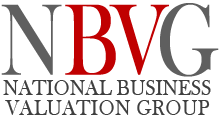Cash: Can You Have Too Much of a Good Thing?
We have all heard the expression, “Cash is King.” This is certainly true in business. When a business runs out of cash, is unable to borrow more or acquire more from another source, the game is over, it is time to pack up all toys and go home. The biggest reason that a business goes bankrupt is running out of cash.
When doing a financial analysis of a business, many of the financial ratios are centered around liquidity ant turnover, i.e. how much current assets exceed current liabilities and how fast a business can turn assets such as accounts receivable and inventory into cash. It is not uncommon to encounter a business that has substantial current assets – such as accounts receivable and inventory, yet no cash. If a business wants to grow sales quickly, one of the easiest ways to do so is to loosen up its sales terms, i.e. give product away to new customers that don’t have the ability or the intent to pay for the product. Doing so will definitely increase sales, yet it won’t produce cash.
Since cash is so critical to the success of a business, intuitively it would seem that the more cash held the better. However, critical as holding cash is to a business, the return on cash is always very low. A business that held all cash, would have a very low return on investment. Especially over the last number of years since interest rates have been at all-time lows. Clearly, there must be some type of balance between cash and income producing assets held in a business.
Excess cash held by a business is considered to be a non-operating asset, the same as holding some other asset that is not needed by the business to generate income. Other non-operating assets would be such things as a condo in Vail, Colorado used by the business owners as a ski-holiday get away. Such an asset, if owned by a widget manufacturing plant in Idaho, would not be necessary to the operations of the business, yet it would still be an asset with value owned by the business. When valuing the business, all expenses, and any revenue, associated with the condo would be removed from the income statement and the condo itself would be removed from the balance sheet. The condo would need to be appraised in order to determine its stand-alone value. The operating business would be valued and then the value of the condo, less any debt owed against it, would be added to the appraised value of the operating business to arrive at the value of the stock or equity in the entity. Excess cash is handled the same way. The amount of excess cash is set aside – the operating company is valued, and then the amount of excess cash is added to the value of the operating entity to arrive at the value of the stock or equity in the entity.
The problem is determining how much cash is needed by the company for operations and thus, how much cash is excess cash? The determination of how much cash is excess cash requires an analysis. There are several methods for determining the required amount of cash for operations.
One of the easiest ways to determine the amount of cash needed for operations is to look at industry data. There are a number of sources of ratios and other financial data for numerous industries. Assuming that the company in question fits easily into a specific industry, data showing the “typical” amount of cash as a percentage of total assets can be found. Using this industry data, the typical percentage of cash for companies in the industry can be compared to the Subject Company and the approximate amount of excess cash determined. In making such an adjustment, it is critical to talk to management first in order to determine if management has some specific needs for this cash as just because it exceeds some industry ratio, does not mean that it is excess cash. Cash could be needed for year-end employee bonuses, for an expansion plan, for a planned acquisition, or for many other legitimate purposes. Should such a purpose be contemplated for the “excess” cash, then it is not excess cash.
Another approach is to determine the “overhead” of the business by adding the cost of goods sold, the selling expenses and general & administrative expenses for the business for a year and dividing by 12 to arrive at the amount of cash needed to cover the overhead. An additional factor must be added to cover contingencies – perhaps something like 20%. In addition, the amount of monthly principal loan payments must be added as the interest is covered in the expenses, but not the principal debt payments. Also, an amount for anticipated income taxes must be added. One month’s worth of cash needed for operations may not be enough depending on the industry and the nature of the company.
Regardless of which method is used, it is very important to be careful when determining that a business is holding more cash than is needed. Certainly, some businesses do hold excess cash and it is important to identify it when it exists. Ignoring excess cash will result in undervaluing of the equity in the entity being appraised. However, when a certain amount of cash is identified as excess cash and this is really not the case, the value conclusion will overstate the value of the entity.
Valuations play a part in all strategic transactions, tax, and many litigation matters. For additional information or advice on a current situation, please do not hesitate to call.
